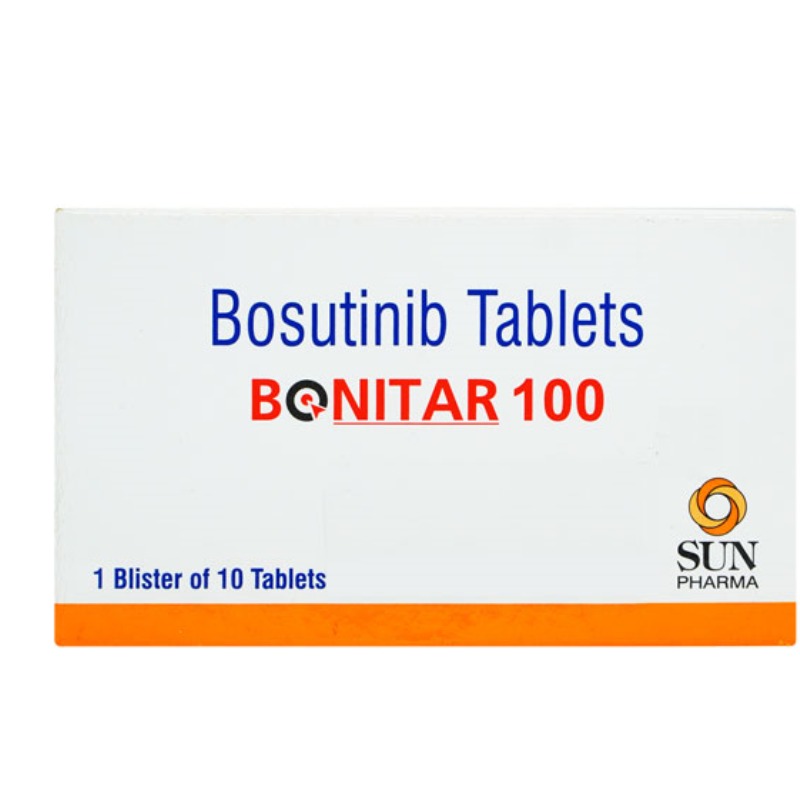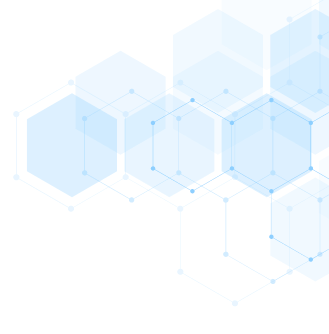DESCRIPTION
MECHANISM OF ACTION
• Phenylaminopyrimidine methanesulfonate compound that occupies the ATP-binding site of the Bcr-Abl protein and only a very limited number of other tyrosine kinases. Binding in this ATP pocket results in subsequent
• inhibition of substrate phosphorylation.
• Potent and selective inhibitor of the P210 Bcr-Abl tyrosine kinase, resulting in inhibition of clonogenicity and tumorigenicity of Bcr-Abl and Ph+ cells.
• Induces apoptosis in Bcr-Abl–positive cells without causing cell differentiation.
• Inhibits other activated Abl tyrosine kinases, including P185 Bcr-Abl, and inhibits other receptor tyrosine kinases for platelet-derived growth factor receptor (PDGFR) and c-Kit.
ABSORPTION
Oral bioavailability is nearly 100%.
DISTRIBUTION
Extensive binding (95%) to plasma proteins, including albumin and α1-acid glycoprotein. Steady-state
drug concentrations are reached in 2–3 days.
INDICATIONS
• Chronic phase of CML—FDA-approved first-line therapy in adult patients.
• Chronic phase of CML after failure on interferon-α therapy—FDA-approved.
• CML in accelerated phase and/or in blast crisis—FDA-approved.
• Newly diagnosed pediatric patients with Ph+ acute lymphocytic leukemia (Ph+ ALL)—FDA-approved.
• Chronic phase Ph+ CML in pediatric patients whose disease has recurred after stem cell transplant or is resistant to interferon-α.
• Myelodysplastic/myeloproliferative diseases (MDS/MPD) associated with PDGFR gene rearrangements.
• Hypereosinophilic syndrome/chronic eosinophilic leukemia (HES/CEL).
• Relapsed/refractory adult Ph+ ALL.
• Gastrointestinal stromal tumors (GIST) expressing c-Kit (CD117)— Unresectable and/or metastatic disease.
• GIST expressing c-Kit (CD117)—Adjuvant therapy following resection of localized disease.
.
DOSAGE RANGE
• Recommended starting dose is 400 mg/day for patients in chronic phase CML and 600 mg/day for patients in accelerated phase or blast crisis.
Dose increases from 400 mg to 600 mg or 800 mg in patients with chronic phase disease, or from 600 mg to a maximum of 800 mg
(given as 400 mg twice daily) in patients with accelerated phase or blast crisis, may be considered in the absence of
severe adverse drug reaction and severe non–leukemia- related neutropenia or thrombocytopenia in the following circumstances: disease
progression (at any time); failure to achieve a satisfactory hematologic response after at least 3 months of treatment;
failure to achieve a cytogenetic response after 12 months of treatment; or loss of a previously achieved hematologic and/or
cytogenetic response. Patients should be monitored closely following dose escalation given the potential for an increased
incidence of adverse reactions at higher dosages.
• Recommended starting dose is 400 mg/day for patients with unresectable and/or metastatic GIST. Limited data exist on the effect of dose increases from
400 mg to 600 mg or 800 mg in
patients progressing at the lower dose.
• Recommended dose is 400 mg/day for 3 years of adjuvant therapy of patients with early-stage GIST.
• Recommended starting dose is 400 mg/day for patients with MDS/MPD.
• Recommended starting dose is 400 mg/day for patients with HES/CEL.
• Recommended starting dose is 600 mg/day for patients with Ph+ ALL
DRUG INTERACTION
Phenytoin and other drugs that stimulate the liver microsomal CYP3A4 enzymes, including
carbamazepine, rifampin, phenobarbital, and St. John’s Wort—These drugs increase the rate of metabolism of
imatinib, resulting in its inactivation and lower effective drug levels.
DRUG INTERACTION 2
Drugs that inhibit the liver microsomal CYP3A4 enzymes, including ketoconazole, itraconazole, erythromycin, and clarithromycin—These
drugs decrease the rate of metabolism of imatinib, resulting in increased drug levels and potentially increased toxicity.
DRUG INTERACTION 3
Warfarin—Patients on warfarin should be closely monitored for alterations in their clotting parameters (PT and INR) and/or bleeding,
as imatinib inhibits the metabolism of warfarin by the liver P450 system. Dose of warfarin may require careful adjustment in the presence of imatinib therapy.
SPECIAL CONSIDERATIONS
• Patients should be weighed and monitored regularly for signs and symptoms of fluid retention. The risk of fluid retention and edema is increased with higher drug doses and in patients of age > 65 years.
• Use with caution in patients with underlying hepatic impairment. Dose adjustment is not required in patients with mild or moderate hepatic impairment. Patients with severe hepatic impairment should have a 25% reduction in the recommended starting dose.
• Use with caution in patients with underlying renal impairment. For patients with moderate renal impairment (CrCL 20–39 mL/min), doses greater than 400 mg are not recommended, and patients should have a 50% reduction in the recommended starting dose. For patients with mild renal impairment (CrCL 40–59 mL/min), doses greater than 600 mg are not recommended.
• Monitor CBC on a weekly basis for the first month, biweekly for the second month, and periodically thereafter.
• Imatinib should be taken with food and a large glass of water to decrease the risk of GI irritation. Imatinib tablets can be dissolved in water or apple juice for patients who have difficulty swallowing.
• Hematologic responses typically occur within 2 weeks after initiation of therapy, while complete hematologic responses are observed within
• 4 weeks after starting therapy.
• Cytogenetic responses are observed as early as 2 months and up to 10 months after starting therapy. The median time to best cytogenetic response is about 5 months.
• Carefully monitor dose of drug when used in patients with seizure disorders on phenytoin. Dose of drug may need to be increased, as the metabolism of imatinib by the CYP3A4 enzyme is enhanced in the presence of phenytoin.
• Patients who require anticoagulation should receive low-molecular- weight or standard heparin, as imatinib inhibits the metabolism of warfarin.
• Monitor cardiac function before (baseline) and periodically during therapy with either MUGA radionuclide scan or echocardiogram to assess LVEF. The diagnosis of CHF should be considered in patients who experience edema while on imatinib.
• Avoid Seville oranges, starfruit, pomelos, grapefruit juice, and grapefruit products while on imatinib therapy.
• Patients should be closely monitored for depressive symptoms and suicidal ideation while on therapy.
• Musculoskeletal pain may be a sign of potential withdrawal syndrome in patients who had stopped imatinib therapy after having been on treatment for more than 3 years. Pain sites include shoulder and hip regions, extremities, and hands and feet, along with muscle tenderness.
• Screen all patients for hepatitis B (HBV) infection before initiation of imatinib therapy. Closely monitor HBV carriers for signs of active HBV infection during imatinib therapy. Imatinib therapy can increase the risk of HBV reactivation, and imatinib therapy should be permanently discontinued in the event of HBV reactivation.
• Pregnancy category D. Breastfeeding should be avoided.
TOXICITY 1.
Nausea and vomiting occur in 40%–50% of patients. Usually related to the swallowing of capsules and relieved when the drug is taken with food.
TOXICITY 2
Transient ankle and periorbital edema. Usually mild to moderate in nature.
TOXICITY 3
Occasional myalgias.
TOXICITY 4
Fluid retention with pleural effusion, ascites, pulmonary edema, and weight gain. Usually dose-related and more common in elderly patients and
in those in blast crisis and the accelerated phase of CML. CHF is a rare but serious adverse event.
TOXICITY 5
Diarrhea is observed in 25%–30% of patients.
TOXICITY 6
Myelosuppression with neutropenia and thrombocytopenia.
TOXICITY 7
Mild, transient elevation in serum transaminases. Clinically asymptomatic in most cases.
TOXICITY 8
Skin toxicity in the form of bullous reactions, including erythema multiforme and Stevens-Johnson syndrome.
TOXICITY 9
Insomnia, depression, and suicidal ideation.
SPECIFICATION


Login To Comment